 Miscellaneous
Miscellaneous  Miscellaneous
Miscellaneous  Politics
Politics 10 Lesser-Known Far-Right Groups of the 21st Century
 History
History Ten Revealing Facts about Daily Domestic Life in the Old West
 Weird Stuff
Weird Stuff 10 Everyday Products Surprisingly Made by Inmates
 Movies and TV
Movies and TV 10 Actors Dragged out of Retirement for One Key Role
 Creepy
Creepy 10 Lesser-Known Shapeshifter Legends from Around the World
 Animals
Animals 10 Amazing Animal Tales from the Ancient World
 Gaming
Gaming 10 Game Characters Everyone Hated Playing
 Books
Books 10 Famous Writers Who Were Hypocritical
 Humans
Humans 10 of the World’s Toughest Puzzles Solved in Record Time
 Miscellaneous
Miscellaneous 10 Ironic News Stories Straight out of an Alanis Morissette Song
 Politics
Politics 10 Lesser-Known Far-Right Groups of the 21st Century
 History
History Ten Revealing Facts about Daily Domestic Life in the Old West
Who's Behind Listverse?

Jamie Frater
Head Editor
Jamie founded Listverse due to an insatiable desire to share fascinating, obscure, and bizarre facts. He has been a guest speaker on numerous national radio and television stations and is a five time published author.
More About Us Weird Stuff
Weird Stuff 10 Everyday Products Surprisingly Made by Inmates
 Movies and TV
Movies and TV 10 Actors Dragged out of Retirement for One Key Role
 Creepy
Creepy 10 Lesser-Known Shapeshifter Legends from Around the World
 Animals
Animals 10 Amazing Animal Tales from the Ancient World
 Gaming
Gaming 10 Game Characters Everyone Hated Playing
 Books
Books 10 Famous Writers Who Were Hypocritical
 Humans
Humans 10 of the World’s Toughest Puzzles Solved in Record Time
10 Facts About The Western Sanitation Movement
We expect clean streets and long lives in the developed Western world, where health care programs and disease prevention comprise a thriving industry. But public health infrastructure is a relatively recent development in modern society, born and brought up on the backs of some of the greatest engineers, researchers, and physicians history has ever known.
Here is a list providing an overview of the facts and events that occurred during the Western sanitation movement of the 19th and 20th centuries. You can thank this movement for the fact that you don’t have to trudge through feces for your morning cup of coffee or risk contracting cholera every time you get a drink of water.
10 The Industrial Revolution And Increasing Population
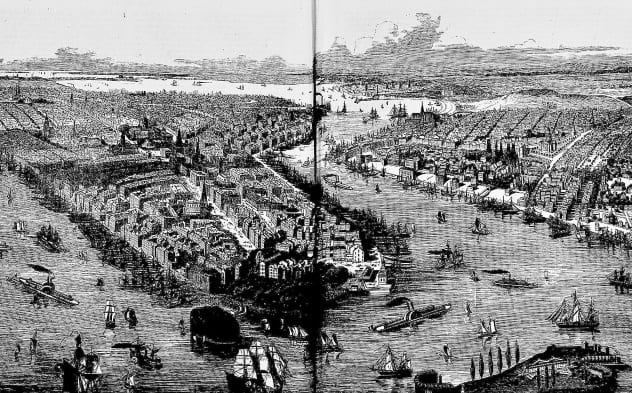
The 19th-century sanitation movement came at a key point in early American and European history. The cleanliness and health of city reisdents was quite poor. Sanitation increasingly became an issue because of two factors: the Industrial Revolution and immigration. The Industrial Revolution began in Britain because of an abundance of coal and changing ideologies about the economy. Wealth and travel would increase, and as a result, many people would immigrate to big cities in Britain and the United States looking for work and wealth.
In the US, the population in the urban areas of the country rose from around 1.8 million to over 54 million between 1840 and 1920. As a result, waste would build up, in the form of both human filth and industrial debris, and there would initially be no organized public effort to preserve the health of the people.[1]
9 John Howard’s Prison Reform
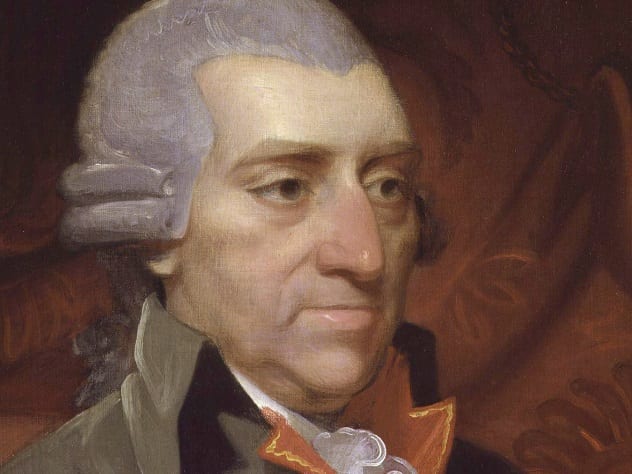
John Howard was a dedicated philanthropist in the mid- to late 18th century, and his greatest contribution was his advocacy for prison reform and improvements in sanitation and overall public health. Howard became the sheriff of Bedfordshire in 1773. Supervising the county jail, he observed the horrid conditions of the facility and its prisoners. English prisoners were expected to pay for all of their essentials. The poorest of them couldn’t afford commodities as fundamental as food, bedding, and clothing. Prisoners were expected to pay off their jailers upon release, so those who could not afford to do so would stay in jail long after their sentence had ended.
Howard’s reporting highlighted the unsanitary conditions of the jails he visited. He wrote three editions to his book on the subject, The State of Prisons in England and Wales, and his frank recollection of the facts gave his words enough credence to avoid any trouble with the authorities in England and Wales. Howard’s advice for improvements would set the standard for what the sanitary movement would advocate for. His calls for proper health care and clean accommodations regardless of economic status, and other suggestions outside of the sanitary conditions, spurred the movement into the public eye for the first time.[2]
8 Quarantine

Quarantine of the diseased and otherwise ill became a common practice in the 19th century, although implementing such a tactic was sporadic. In the United States, federal involvement in the form of legislation passed by Congress only occurred in 1878 after yellow fever outbreaks.[3] Port cities with lots of trade ships and immigration were areas in the US that implemented quarantine councils, voluntary general hospitals, and community health centers most fervidly.
In 1808, the Boston Board of Health ordered that ships coming from certain tropical posts such as the Mediterranean and Caribbean had to be quarantined for three days or until 25 days had passed since they left port, whichever came later, before crew and cargo could integrate with society. These planned, public actions against diseases like cholera and smallpox were the first of their kind and paved the way for further focused attempts to keep these illnesses at bay.
7 Edwin Chadwick And Miasma Theory
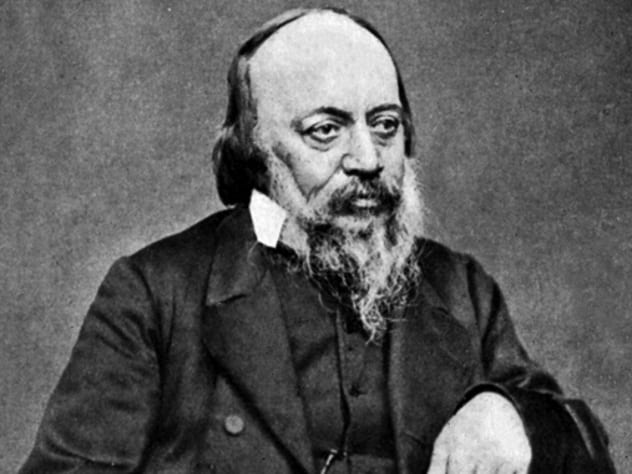
The most ironic thing about the Western sanitary movement was the people who peddled it. There were two opposing theories about how diseases spread: germ theory and miasma theory (aka anti-contagionist theory), both of which had their fair share of believers. The germ theory, which we currently accept, states that certain diseases enter the body as microorganisms invisible to the naked eye. The miasma theory affirmed that exposure to the environment, from things such as sewage, noxious fumes, and, crucially, poor sanitation, caused the diseases around us. Miasma theory would prove to be false, but the effect it had on the sanitary awakening is astonishing.
One of miasma theory’s biggest advocates, and one of the most influential sanitary reformers of his time, was Edwin Chadwick. Chadwick campaigned for the passage of the Public Health Act of 1848, an act which reflected most of the arguments Chadwick had written about years earlier in General Report on The Sanitary Condition of the Labouring Population of Great Britain. Chadwick was sure that if we improved the health of the poor, it would have a positive effect on the country’s economy, as fewer people would need to seek poor relief for sick and dying family members. Improvements such as better drainage systems for the sewers, clean drinking water, and a medical officer appointed to each town were listed in the act, but a limitation on money and influence dimmed its effectiveness at making lasting change.[4]
Ironically, even if Chadwick’s beliefs about diseases would be disproven, they still positively affected society by pushing for the public health awareness and systems we benefit from today.
6 John Snow And The Cholera Outbreak

John Snow was a staunch opponent of Edwin Chadwick on the battlefield of 19th-century disease theory. Snow was the physician to Queen Victoria, and the germ theorist determined the source of an outbreak of cholera, an intestinal disease that wreaked havoc across England. Snow was skeptical of the idea that cholera entered the body through the air, instead believing that it stemmed from contamination in the water that sufferers drank. In the 1800s, sewage systems hadn’t been standardized yet, so people would have to collect their drinking and bathing water from community pumps or wells while dumping waste into the Thames river or pits called cesspools. Snow suspected that the waste from these areas was seeping into the drinking water, but he couldn’t prove it to other scientists of the time until a cholera outbreak in 1854.
The outbreak began in the suburb of Soho, where Snow just so happened to live at the time. Snow wrote of the epidemic, “Within 250 yards of the spot where Cambridge Street joins Broad Street there were upwards of 500 fatal attacks of cholera in 10 days. As soon as I became acquainted with the situation and extent of this irruption [sic] of cholera, I suspected some contamination of the water of the much-frequented street-pump in Broad Street.”[5] So Snow documented where those who had contracted cholera lived and compared their locations to the different water pumps in the suburb by drawing his own map. Eventually, he pinpointed the water pump on Broad Street as the source of the contamination.
Snow’s map helped pioneer the field of epidemiology, a branch of medicine focused on how diseases distribute and how they can be contained and controlled. Most miasma theorists, Chadwick included, weren’t convinced that their beliefs were false by Snow’s research. But regardless of Snow’s personal convictions, both sides of the disease debate took his findings as evidence that proper city sanitation had to be a priority to avoid outbreaks of illness in the future.
5 The New York Sanitary Survey
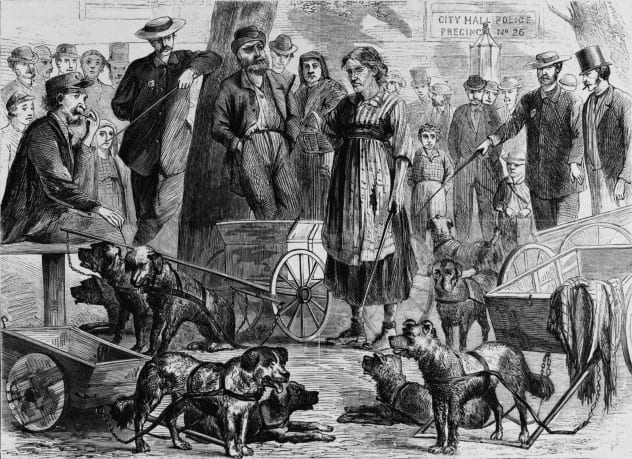
Focusing back on the States, New York City was a garbage dump. Manure sat in the streets, and noxious fumes filled the air. It is estimated that over 200,000 cases of entirely preventable diseases caused by an ineffective Board of Health occurred every year. In 1850, Lemuel Shattuck would write a plan for a new public health program in the US based on miasma theory. Out of the 50 suggestions that Shattuck proposed, more than half would become universally accepted practices in modern times.
In 1865, more than a decade after Shattuck’s report, the Association’s Special Council of Hygiene and Public Health would assign a group of inspectors to conduct a citywide survey of all 31 districts of New York.[6] The survey in question was nine pages long, and by the end of the program, 17 volumes of review would lead to the enactment of the 1866 Metropolitan Health Bill. Many revisions to New York’s health codes would follow over the next century, but this survey would continue to form the basis of all public health laws from this point on.
4 Chesbrough’s Sewage System Design
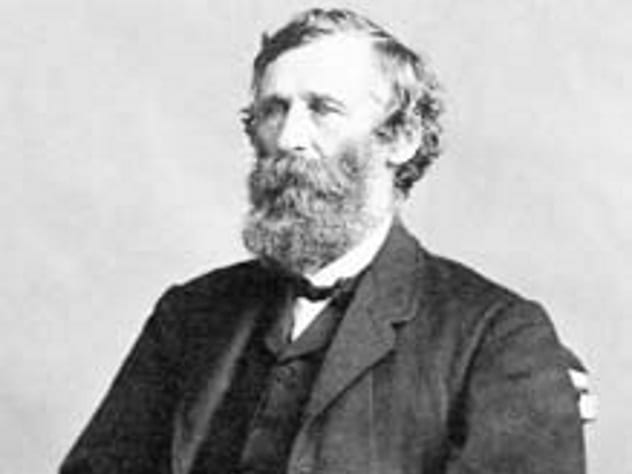
To the west, Chicago was also amid a health crisis after a fierce outbreak of intestinal and bowel infections. Chicago’s waste disposal system was unfortunately similar to the situation John Snow had faced in Soho. Sewage dumped in the Chicago River had dispersed into Lake Michigan, Chicago’s main water source. Also, because of how close the water they were drawing from was to the land, small fish would regularly be sucked into the drain and shot out of flowing water faucets. Residents would joke about the water, saying, “When you turned on the water, you got chowder!”[7]
Ellis S. Chesbrough had started working as a chainman on a railway survey when he was only 13 years old, missing out on much of his schooling. Regardless of his lacking education, Chesbrough’s career as an engineer flourished until he was eventually hired as the chief engineer of the Boston Water Works in 1846. He built many of Boston’s most important water-related structures, such as the Brookline Reservoir, which supplied water to every resident in Boston.
Later, after leaving Boston for Chicago, Chesbrough became an engineer for the Chicago Board of Sewerage Commissioners. He was tasked with giving the city the first comprehensive sewer system in the entire country. After studying several of Europe’s best sewage systems, Chesbrough first constructed a water crib, which is a boat-like structure that collects water from the bottom of lakes and sends it to pumping stations on the shore. Next, Chesbrough decided that drainage was being hindered by the city itself being too low to the ground for his new sewers to fit. So, in a feat famous among civil engineers and all of Chicago, Chesbrough had the city raised roughly 3 meters (10 ft) off the ground. Lifting the buildings using jackscrews, Chesbrough had new foundations built under every single domicile, despite the complaints and legal threats of the business owners because of the costs of the project.
Chesbrough’s design revolutionized the city streets, as waste was now properly filtered and managed under his innovations, which furthered his reputation as America’s best authority on urban water and sewer issues.
3 George E. Waring
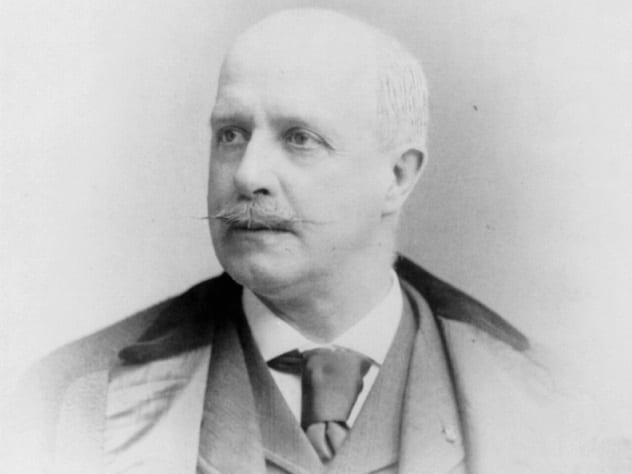
After the horrors of the US Civil War and a yellow fever outbreak that ravaged Tennessee in 1878, one of the most influential figures in both miasma theory and 19th-century sanitation would build his reputation. George E. Waring was a drainage and agricultural engineer and a Civil War veteran who would be the first man to establish sanitary engineering as a reputable career.
Waring had already earned praise in New York City during the late 1850s for his design and construction of Central Park’s drainage system, which would form the park’s ponds and lakes. In 1878, during a yellow fever epidemic, Waring would create a drainage system in Memphis, Tennessee, that mirrored the work of Chesbrough in Chicago. By separating the stormwater runoff that flooded the paved roads of Memphis from regular sewage waste, Waring could reduce the sizes of the sewage pipes and lower the chances of leakage.
Later, Waring set his sights back on New York. Improvements had been made in the Big Apple, but the standard of living was still lacking. Garbage was dumped into the streets in places that the majority of the working class and immigrant population called home, causing disease to amass in spades. After becoming the head of New York’s sanitation department, Waring recruited his own personal army called the “White Ducks” (or the “White Wings”) because of their stark white uniforms. Two thousand men strong, Waring’s army organized a new recycling ethic when they cleaned 697 kilometers (433 mi) of street. They boiled organic waste to make oil and grease, they swept the ash off the roads, and they sorted the garbage from the recyclables.[8]
Sixteen years later, half of all cities in the US would have sewage systems, and the rest of the developed world would soon follow. Waring left the United States in 1898 to study sanitation techniques in Cuba, where he would tragically die after, ironically, contracting yellow fever. The New York Times paid tribute to him by writing, “There is not a man or a woman or a child in New York who does not owe [Waring] gratitude for making New York, in every part, so much more fit to live in than it was when he undertook the cleaning of the streets.” Waring would be remembered as America’s “apostle of cleanliness.”
2 The Founding Of Bacteriology

As the health of the individual became a public issue rather than a private one, society would advance its knowledge on the diseases it had once feared. This newfound curiosity soon killed the miasma theory of disease and thrust the germ theory that people like John Snow had advocated for into the spotlight. One founder of bacteriology was Ferdinand Cohn, who had started to study bacteria in the late 1860s. Cohn organized known bacteria into a classification system based on their morphological differences.
Cohn would be a consultant of Robert Koch, a German bacteriologist who discovered the bacteria responsible for diseases such as tuberculosis and cholera. A French chemist and microbiologist named Louis Pasteur would discover the bacteria that causes anthrax. Pasteur would eventually develop a vaccine against the disease and another vaccine against rabies. His experiments in the fermentation process of souring milk and alcohol would also provide evidence for the germ theory of fermentation in living organisms.
All of these discoveries would inspire intervention efforts to prevent the spread of diseases and eventually wipe them out. The germ theory and bacteriology would force a sound scientific basis into all public health efforts as the sanitary movement closed in on its final objective.[9]
1 Laboratory Research And Federal Health Services
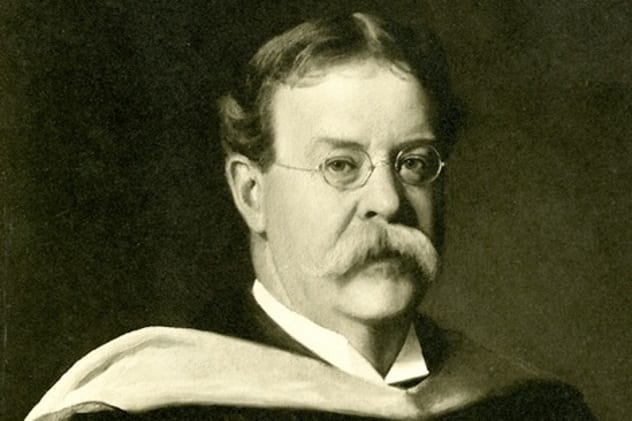
On February 24, 1888, Surgeon General John B. Hamilton testified in front of the United States Congress. Hamilton was the first to inform Congress of the Laboratory of Hygiene (which would eventually become the National Institutes of Health) when he announced, “I desire to invite the attention of the Committee to the Weekly Abstract published a few weeks ago, in which the diagnosis of cholera was made of the cases that occurred in New York, by an officer of my service by the name of Kinyoun, who spent nearly five years in the study of bacteriology. We spent several hundred dollars in forming a laboratory in New York.”
A few years later, and the US would establish a series of local and state health departments, starting in New York and Massachusetts. The discoveries prior to these laboratories were made in private, and the improvements to water and sewage systems, although revolutionary, were done in the name of a faulty theory. Now, efforts were being put into studying city water systems to detect and control the bacteria recognized as the cause of deadly diseases. At the center of this new era was biologist William T. Sedgwick, a founder of the Harvard School of Public Health in 1913. Sedgwick identified bacteria from fecal matter that causes typhoid disease, eventually developing the first treatment technique. One historian described Sedgwick’s book on his research, Principles of Sanitary Science and Public Health, as “possibly the most potent single factor in awakening leaders in medicine, engineering, and science to the importance of sanitation in that era of rapid urban and industrial development.”[10]
All the research done in these facilities would allow doctors to diagnose patients far earlier, which helped keep contagious illnesses from spreading. Still, scientists soon realized that treatment and immunization wouldn’t be enough to fully eradicate the diseases that festered most aggressively in the poor and uneducated. So, at the beginning of the 20th century, the sanitation movement would reach its final stage: the education of the common man about personal health care in favor of a healthier society. Federal health services would fund public and military disease control programs. These efforts would have their successes, failures, steps forward, and steps backward. The fight continues to this day as a combination of scientific research and social values that set the foundation for solid public health.
Savannah O. Skinner is a freelance writer and author sometimes working under the pen name S.O. Skinner.
Read about more things from that past that shaped our present on 10 Forgotten Events That Shaped The Modern World and 10 Historical Riots With Important Consequences.








